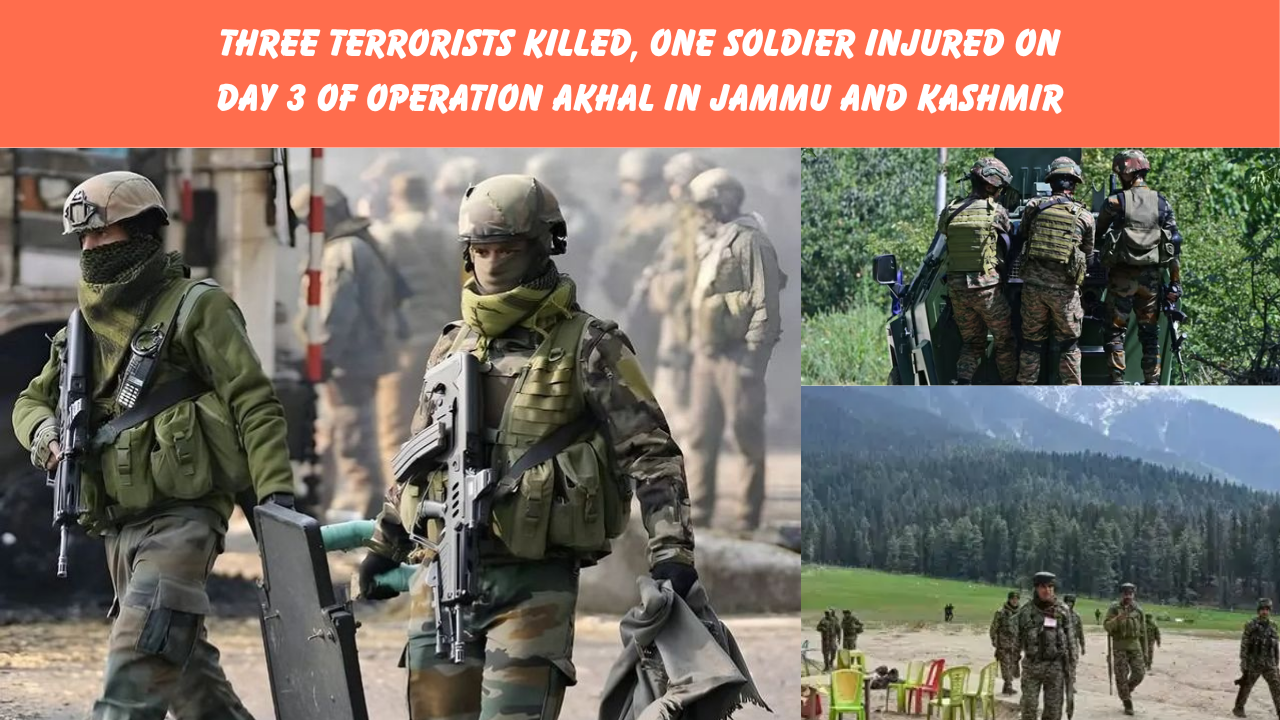
In the Shadows of the Akhal Forest, a Battle Unfolds
Date: Saturday, August 2, 2025
Time: 6:30 PM IST
KULGAM, SOUTH KASHMIR — There’s a certain stillness in the mountains before a storm. But this time, the thunder didn’t come from the skies. It came from the trees — bullets, mortar shells, orders barked through radio crackle, and the crackling silence that follows when a soldier goes down.
Operation Akhal entered its third day on Saturday, and it’s no longer just another line in the long list of anti-terror efforts. It’s become a battleground etched into the soil of South Kashmir. And it’s not over yet.
The Night the Forest Roared
It began, as it often does, with a whisper.
A credible intelligence tip had landed on desks in Srinagar — a group of armed militants, heavily equipped, had slipped into the Akhal forest region in Kulgam. By Friday morning, boots were already on the ground. CRPF units. J&K Police. Indian Army personnel. Moving quietly, eyes sharp, fingers near triggers.
Then, everything broke loose.
Gunfire erupted. Grenades shattered the underbrush. Locals in the nearby hamlets — used to the routine tension of the Valley — said this one felt different. “The blasts weren’t far,” a shopkeeper from a neighbouring village said. “This time, it was like the war had reached our backyard.”
A soldier was hit in the initial burst. The mission was paused. Not abandoned — never that. But recalibrated. You don’t walk into dense, militant-occupied forests without planning every step twice.
By Saturday afternoon, three more militants lay dead. The count was up to six.
#InPhotos | Security forces are maintaining a strict cordon around the Akhal forest range in Kulgam district for the fifth day today, where a fierce gun battle is underway.
— United News of India (@uniindianews) August 5, 2025
(📸: @shahjunaid / UNI)#Kulgam | #JammuandKashmir | #Akhalforest #Army pic.twitter.com/WwuhFh4XQG
Who Are They Fighting?
Security sources, leaning on open-source intel and intercepted chatter, confirmed the men killed were members of The Resistance Front — TRF. If that name rings a bell, it’s because TRF has become shorthand for Lashkar-e-Taiba’s shadow games in the Valley. TRF took credit for the Pahalgam carnage earlier this year. 26 civilians gone.
“They’re not ragtag fighters,” one officer told us under the condition of anonymity. “They’ve got funding, gear, encrypted comms, and training. But so do we. And more importantly, we have the terrain now. We’re not letting them slip away.”
The Forest Is Still Breathing
Even as this report is filed, sporadic firing continues. Drones buzz overhead, scanning for heat signatures. Choppers are circling. The elite Rashtriya Rifles are combing deeper into the woodland.
High-level oversight is in place. The DGP and the 15 Corps Commander are reportedly in constant communication with the ground units. Sources say there’s a strong possibility that the forest was being used as a longer-term staging ground by militants.
This isn’t a search anymore. It’s a sweep.
A Shift Among the Locals
Interestingly — and hearteningly — something else is changing too. The mood.
For years, counter-terror operations have been met with fear, sometimes even resistance, from locals. But in Akhal, there’s cautious cooperation. Not joy, but resolve.
“We just want our children to sleep through the night,” a teacher said quietly. “If this means an end to the gunshots, then so be it.”
It’s a statement of exhaustion. Of decades of waiting for peace to arrive and stay.
FAQs: What You Need to Know About Operation Akhal
What is Operation Akhal?
It’s a joint anti-terror mission launched by Indian security forces in the Akhal forest area of Kulgam, South Kashmir, following intelligence inputs of militant presence.
How many militants have been killed so far?
Six, as of Saturday evening. The count could rise as the operation continues.
Were there any casualties among Indian forces?
One soldier was injured in the initial exchange. Officials say he is out of danger.
Who are the militants involved?
They are believed to be part of The Resistance Front (TRF), which is considered a proxy group of Lashkar-e-Taiba.
Is the area safe now?
Not yet. The forest area is still an active conflict zone. Residents have been advised to avoid the perimeter.
What’s the broader impact of this operation?
Beyond the tactical success, it could signal a shift in both intelligence efficiency and local cooperation. It might be too early to call it a turning point — but it’s definitely not business as usual.






